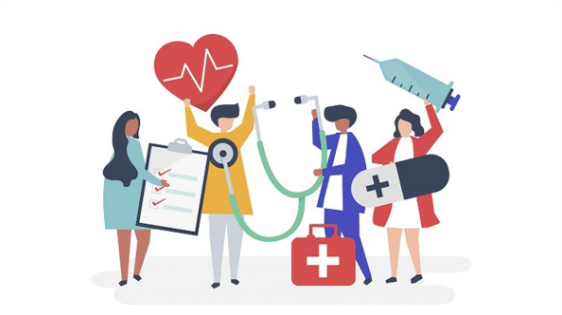“Exercise? I get it on the golf course. When I see my friends collapse, I run for the paramedics.”
–Red Skelton
With the passage of the Affordable Healthcare Act, otherwise known as Obamacare, the government set the stage for universal health insurance for all types of medicine, mandating that everyone either get insurance or pay a fine for not having it. In theory, when you get sick, you’re supposed to be covered, at least to some extent, in the process and costs of getting well again.
What about the costs of not getting sick in the first place? Try to submit a claim for a gym membership, and, at best, you’ll get a polite declination letter. Yet, most health insurance and healthcare policy focuses reactively on treating the symptoms once you get sick rather than working to prevent you from getting sick in the first place.
Why is this so? It’s mainly due to accounting; it’s much easier to show costs and benefits of restoring someone to health than to account for activities which probably, but not definitively, would have prevented an illness. While there are some limited studies showing the positive impacts of a prevention program (see the CATCH program) in a test-control experiment, there are not many programs that effectively track the long-term positive impacts of preventive medicine. Yet, the benefits are clear.

- Less time lost at work due to sickness. Most measurements of healthcare account for direct costs – how much that heart bypass cost to perform – but they do not account for the indirect costs, such as lost wages. So, unless you have disability insurance (hint, hint), you’re socked with a deductible, and, in all likelihood, a significant co-pay right at the time when you’re unable to work and to earn income.
- Longer life expectancy and higher quality of life. If you’re healthy, then it costs less to live. You don’t have to pay for drugs and other therapies to maintain your health as the sick have to pay. Also, you’ll, generally, live longer, meaning more productive years as a contributing members of society.
- Improved mental health. The Latin saying mens sana in corpore sano (a sound mind in a sound body) has a solid foundation. Studies show that the obese tend to have higher levels of depression than those people who are not obese. While there is scant evidence quantifying the value of not suffering from mental disorders, it is indisputable to say that one would choose to not have a mental disorder if given the choice.
While some preventive approaches have uncertain benefits (do you really need a colon cleanse? Does ginko biloba really prevent Alzheimer’s?), one set of illnesses and causes are clear and have been studied: obesity and obesity-related illness. A study from Brigham Young University discussed the impact of obesity on healthcare costs by solely looking at obesity-related diseases, almost all of which are preventable.
I’ll take one example from the paper to illustrate the costs and savings.
Treatments of artery bypass grafts, angina, and hypertension range between $5,000 and $65,000, with an average cost of $25,000. The average recovery time from a stent operation is a week, and the average wage index for Social Security in 2010 was $41,673.83, meaning that a lost week cost $801.42 in foregone income. Ranexa, a commonly prescribed angina medication, costs approximately $16.38 per day, or $5,980.16 a year. So, once you include lost time at work, the cost runs to nearly $31,000, with a $6,000 recurring prescription drug bill. Since the average age of an angina sufferer is 63.5 years, and the average life expectancy is 78.5 years, this means an average total prescription drug cost solely for Ranexa of $89,702.40, bringing the average total cost of angina up to $115,503.82.
Meanwhile, let’s look at the cost of living and eating healthy. Assume that you pay a $100 a month gym membership – though you can stay healthy without going to a gym – and you pay $100 a month more to buy fresh fruits and vegetables and organic foods while not paying for preprocessed foods. This means that you’re paying $2,400 a year to prevent obesity. There are approximately 101.7 million obese Americans and 6.3 million suffer from angina with 500,000 new cases per year. This means that there is a 6.2% chance that an obese person will suffer from angina. Since almost all angina cases occur after age 30, we can assume that the timespan of risk is from 30 to the average life expectancy – 78.5 years old. So, for 48.5 years, you could spend $2,400 a year to prevent obesity, and, therefore, angina. This means you’d spend $116,400 to not spend $115,500 on angina treatment.
This expenditure is nearly breakeven, and that is just for the prevention of angina. There are many other diseases, such as diabetes, cardiovascular disease, and most strokes, which are also tied to obesity.
I’ve obviously done a back of the envelope calculation of preventing one disease, even though many other diseases can also be tied to the same prevention. As long as you actually make the lifestyle changes, rather than buying a gym membership and never exercising or buying healthier food and then doubling your caloric intake, you should get a positive return on your investment because of lower medicine costs, not to mention the overall benefits that a healthy lifestyle and the feeling of well-being will provide to you.
Author Profile
- John Davis is a nationally recognized expert on credit reporting, credit scoring, and identity theft. He has written four books about his expertise in the field and has been featured extensively in numerous media outlets such as The Wall Street Journal, The Washington Post, CNN, CBS News, CNBC, Fox Business, and many more. With over 20 years of experience helping consumers understand their credit and identity protection rights, John is passionate about empowering people to take control of their finances. He works with financial institutions to develop consumer-friendly policies that promote financial literacy and responsible borrowing habits.
Latest entries
 Low Income GrantsSeptember 25, 2023How to Get a Free Government Phone: A Step-by-Step Guide
Low Income GrantsSeptember 25, 2023How to Get a Free Government Phone: A Step-by-Step Guide Low Income GrantsSeptember 25, 2023Dental Charities That Help With Dental Costs
Low Income GrantsSeptember 25, 2023Dental Charities That Help With Dental Costs Low Income GrantsSeptember 25, 2023Low-Cost Hearing Aids for Seniors: A Comprehensive Guide
Low Income GrantsSeptember 25, 2023Low-Cost Hearing Aids for Seniors: A Comprehensive Guide Low Income GrantsSeptember 25, 2023Second Chance Apartments that Accept Evictions: A Comprehensive Guide
Low Income GrantsSeptember 25, 2023Second Chance Apartments that Accept Evictions: A Comprehensive Guide

